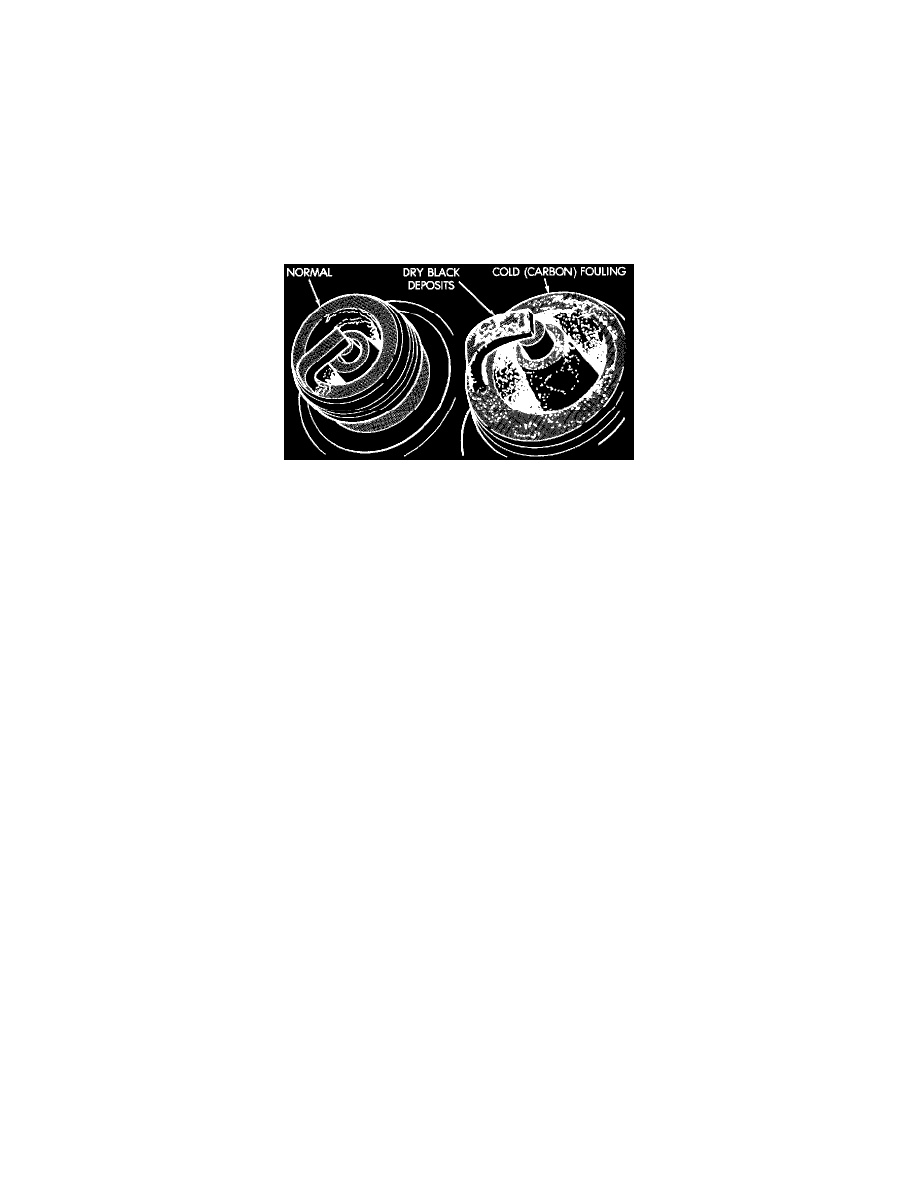Cherokee 4WD L6-4.0L VIN S (1998)

Spark Plug: Component Tests and General Diagnostics
Plug Cleaning
The plugs may be cleaned using commercially available spark plug cleaning equipment. After cleaning, file the center electrode flat with a small point
file or jewelers file before adjusting gap.
CAUTION: Never use a motorized wire wheel brush to clean the spark plugs. Metallic deposits will remain on the spark plug insulator and will cause
plug misfire.
Spark Plug Conditions
NORMAL OPERATING
Normal Operation And Cold (Carbon) Fouling
The few deposits present on the spark plug will probably be light tan or slightly gray in color. This is evident with most grades of commercial
gasoline. There will not be evidence of electrode burning. Gap growth will not average more than approximately 0.025 mm (0.001 in) per 1600
km (1000 miles) of operation. Spark plugs that have normal wear can usually be cleaned, have the electrodes filed, have the gap set and then be
installed.
To test ignition coil-to-distributor cap cable, do not remove the cable from the cap. Connect ohmmeter to rotor button (center contact) of
distributor cap and terminal at ignition coil end of cable. If resistance is not within specifications as found in the Spark Plug Cable Resistance
chart, remove the cable from the distributor cap. Connect the ohmmeter to the terminal ends of the cable. If resistance is not within specifications
as found in the Spark Plug Cable Resistance chart, replace the cable. Inspect the ignition coil tower for cracks, burns or corrosion.
Some fuel refiners in several areas of the United States have introduced a manganese additive (MMT) for unleaded fuel. During combustion, fuel
with MMT causes the entire tip of the spark plug to be coated with a rust colored deposit. This rust color can be misdiagnosed as being caused by
coolant in the combustion chamber. Spark plug performance is not affected by MMT deposits.
COLD FOULING/CARBON FOULING
Cold fouling is sometimes referred to as carbon fouling. The deposits that cause cold fouling are basically carbon. A dry, black deposit on one or
two plugs in a set may be caused by sticking valves or defective spark plug cables. Cold (carbon) fouling of the entire set of spark plugs may be
caused by a clogged air cleaner element or repeated short operating times (short trips).
WET FOULING OR GAS FOULING
A spark plug coated with excessive wet fuel or oil is wet fouled. In older engines, worn piston rings, leaking valve guide seals or excessive
cylinder wear can cause wet fouling. In new or recently overhauled engines, wet fouling may occur before break-in (normal oil control) is
achieved. This condition can usually be resolved by cleaning and reinstalling the fouled plugs.
OIL OR ASH ENCRUSTED
